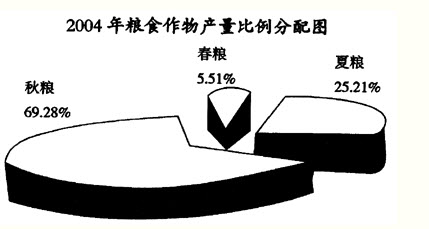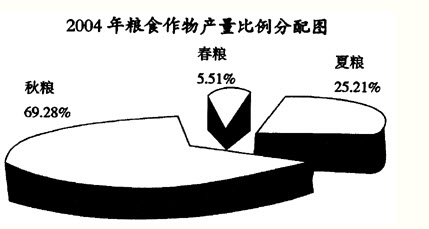
创建自己的小题库
搜索
【单选题】


TEXT D
| Roger Rosenblatt’s book Black Fiction, in attempting to apply literary rather than sociopolitical criteria to its subject, successfully alters the approach taken by most previous studies. As Rosenblatt notes, criticism of Black writing has often served as an excuse for expounding on Black history. Addison Gayle’s recent work, for example, judges the value of Black fiction by overtly political standards, faring each work according to the notions of Black identity which it put forward. Although fiction assuredly springs from political circumstances, its authors react to those circumstances in ways other than ideological, and talking about novels and stories .primarily as instruments of ideology limits much of the fictional enterprise. Rosenblatt’s literary ysis discloses relations and connotations among works of Black fiction which solely political studies have overlooked or ignored. Writing acceptable criticism of Black fiction, however, presupposes giving satisfactory answers to a number of questions. First of all, is there a sufficient reason, other than the racial identity of the authors, to group together works by Black authors Second, how does Black fiction make itself distinct from other modern fiction with which it is largely contemporaneous Rosenblatt’s idea shows that Black fiction constitutes a distinct body of writing that has an identifiable, coherent literary tradition. Looking at novels written by Blacks over the last eighty years, lie discovers recurring concerns and designs independent of chronology. These structures are thematic, and they spring, not surprisingly, from the central fact that the Black characters in these novels exist in a predominantly White culture, whether they try to conform to that culture or rebel against it. Black Fiction does leave some aesthetic questions open. Rosenblatt’s thematic ysis permits considerable objectivity; he even states that it is not his intention to judge the merit of the various works--yet his reluctance seems misplaced, especially since an attempt to appraise might have led to interesting results. For instance, some of the novels appear to be structurally diffused. Is this a defect, or are the authors working out of, or trying to create, a different kind of aesthetic In addition, the style of some Black novels, like Jean Toomer’s Cane, verges on expressionism or surrealism; does this technique provide a counterpoint to the popular theme that describes the fate against which Black heroes are struggling, a theme usually conveyed by more naturalistic modes of expression In spite of such omissions, what Rosenblatt does include in his discussion makes for a keen and worthwhile study. Black Fiction surveys a wide variety of novels, bringing to our attention in the process some fascinating and little-known works like James Weldon Johnson’s Autobiography of an Ex-Colored Man. Its argument is tightly constructed, and its forthright, clear style exemplifies levelheaded and penetrating criticism. |
A.
point out relations between Rosenblatt’s method of thematic ysis and earlier criticism.
B.
clarify the point about expressionistic style made earlier in the text.
C.
qualify the assessment of Rosenblatt’s book made in the first paragraph of the text.
D.
give a specific example of one of the accomplishments of Rosenblatt’s work.

 分享
分享
 反馈
反馈 收藏
收藏 举报
举报参考答案:


举一反三
【单选题】What kind of rooms does the man want to reserve() A.A single room. B.A double room. C.A single room and a double room. D.Two single rooms.
A.
Conversation 1
B.
Questions 6 to 7 are based on the conversation you’ve just heard.
【单选题】Many theories concerning the causes of juvenile delinquency (crimes committed by young people) focus either on the individual or on society as the major contributing influence. Theories (31) on the i...
A.
on
B.
in
C.
for
D.
with
【单选题】2003年非粮食作物的种植总面积约为()。 A.62万公顷 B.156万公顷 C.138万公顷 D.103万公顷
A.
2004年某省种植业结构继续调整,粮食作物的种植面积占农作物种植总面积比例由上午的60.2%调整为58.4%,年粮食作物种植面积147.11万公顷,比去年减少9.0公顷,粮食总产量713.16万公顷,其中春、夏、秋粮所占比例如下图所示。与去年相比,春粮减产5.31万吨,夏粮减产2.37万吨,秋粮减产42.38万吨,总产量下降50.06万吨。非粮食作物中的油料、蔬菜、药材种植面积分别增长1.3%、3.0%、15.9%;烟叶和甘蔗种植面积分别减少8.7%和1.1%;蔬菜、瓜果、油料、甘蔗等产量均有不同程度的增长。
B.


【单选题】文字资料一 根据国家统计局对全国19500家各种类型企业的调查显示:一季度,全国企业家信心指数为142.0,创下近年最高水平,并首次攀至140.0以上的景气高位。有48.4%的企业家对所在行业总体运行状况持乐观的态度,45.1%的企业家认为变化不大,______,具体表现在:各行业企业家对宏观经济发展信心继续增强。一季度,制造业、建筑业、交通运输仓储和邮政业、...
A.
133.1 124.8
B.
128.2 133.1
C.
128.2 124.8
D.
124.8 128.2
【单选题】Questions 21 and 22 are based on the following news. At the end of the news item, you will be given 10 seconds to answer the questions. Now, listen to the news. How many members are there in the...
A.
13.
B.
23.
C.
22.
D.
15.
【单选题】Many theories concerning the causes of juvenile delinquency (crimes committed by young people) focus either on the individual or on society as the major contributing influence. Theories (31) on the i...
A.
considering
B.
ignoring
C.
highlighting
D.
discarding
【单选题】2007年5月7日,上海市浦东新区税务稽查大队某队稽查员褚某根据单位安排对群众举报反映上海和力建材有限公司(以下简称和力公司)逃避缴纳税款的问题进行突击稽查,查获内销进口建材不入账共计35.6万元的四本自制收据。同月26日,浦东新区税务案件侦查室又将该室收到的和力公司逃避缴纳税款的举报材料移送至稽查大队。褚某在查阅该举报材料时,发现和力公司经理刘某在中国银行浦东分行的存放账外销售款的存折及有关单据...
A.
徇私舞弊不征、少征税款罪
B.
玩忽职守罪
C.
徇私枉法罪
D.
滥用职权罪
【单选题】2004年,粮食作物的总植面积与总产量比2003年减少的百分比约为()。 A.5.8%与6.6% B.1.8%与11.95% C.60.2%与15.9% D.1.8%与6.6%
A.
2004年某省种植业结构继续调整,粮食作物的种植面积占农作物种植总面积比例由上午的60.2%调整为58.4%,年粮食作物种植面积147.11万公顷,比去年减少9.0公顷,粮食总产量713.16万公顷,其中春、夏、秋粮所占比例如下图所示。与去年相比,春粮减产5.31万吨,夏粮减产2.37万吨,秋粮减产42.38万吨,总产量下降50.06万吨。非粮食作物中的油料、蔬菜、药材种植面积分别增长1.3%、3.0%、15.9%;烟叶和甘蔗种植面积分别减少8.7%和1.1%;蔬菜、瓜果、油料、甘蔗等产量均有不同程度的增长。
B.



相关题目:
【单选题】What kind of rooms does the man want to reserve() A.A single room. B.A double room. C.A single room and a double room. D.Two single rooms.
A.
Conversation 1
B.
Questions 6 to 7 are based on the conversation you’ve just heard.
【单选题】Many theories concerning the causes of juvenile delinquency (crimes committed by young people) focus either on the individual or on society as the major contributing influence. Theories (31) on the i...
A.
on
B.
in
C.
for
D.
with
【单选题】2003年非粮食作物的种植总面积约为()。 A.62万公顷 B.156万公顷 C.138万公顷 D.103万公顷
A.
2004年某省种植业结构继续调整,粮食作物的种植面积占农作物种植总面积比例由上午的60.2%调整为58.4%,年粮食作物种植面积147.11万公顷,比去年减少9.0公顷,粮食总产量713.16万公顷,其中春、夏、秋粮所占比例如下图所示。与去年相比,春粮减产5.31万吨,夏粮减产2.37万吨,秋粮减产42.38万吨,总产量下降50.06万吨。非粮食作物中的油料、蔬菜、药材种植面积分别增长1.3%、3.0%、15.9%;烟叶和甘蔗种植面积分别减少8.7%和1.1%;蔬菜、瓜果、油料、甘蔗等产量均有不同程度的增长。
B.


【单选题】文字资料一 根据国家统计局对全国19500家各种类型企业的调查显示:一季度,全国企业家信心指数为142.0,创下近年最高水平,并首次攀至140.0以上的景气高位。有48.4%的企业家对所在行业总体运行状况持乐观的态度,45.1%的企业家认为变化不大,______,具体表现在:各行业企业家对宏观经济发展信心继续增强。一季度,制造业、建筑业、交通运输仓储和邮政业、...
A.
133.1 124.8
B.
128.2 133.1
C.
128.2 124.8
D.
124.8 128.2
【单选题】Questions 21 and 22 are based on the following news. At the end of the news item, you will be given 10 seconds to answer the questions. Now, listen to the news. How many members are there in the...
A.
13.
B.
23.
C.
22.
D.
15.
【单选题】Many theories concerning the causes of juvenile delinquency (crimes committed by young people) focus either on the individual or on society as the major contributing influence. Theories (31) on the i...
A.
considering
B.
ignoring
C.
highlighting
D.
discarding
【单选题】2007年5月7日,上海市浦东新区税务稽查大队某队稽查员褚某根据单位安排对群众举报反映上海和力建材有限公司(以下简称和力公司)逃避缴纳税款的问题进行突击稽查,查获内销进口建材不入账共计35.6万元的四本自制收据。同月26日,浦东新区税务案件侦查室又将该室收到的和力公司逃避缴纳税款的举报材料移送至稽查大队。褚某在查阅该举报材料时,发现和力公司经理刘某在中国银行浦东分行的存放账外销售款的存折及有关单据...
A.
徇私舞弊不征、少征税款罪
B.
玩忽职守罪
C.
徇私枉法罪
D.
滥用职权罪
【单选题】2004年,粮食作物的总植面积与总产量比2003年减少的百分比约为()。 A.5.8%与6.6% B.1.8%与11.95% C.60.2%与15.9% D.1.8%与6.6%
A.
2004年某省种植业结构继续调整,粮食作物的种植面积占农作物种植总面积比例由上午的60.2%调整为58.4%,年粮食作物种植面积147.11万公顷,比去年减少9.0公顷,粮食总产量713.16万公顷,其中春、夏、秋粮所占比例如下图所示。与去年相比,春粮减产5.31万吨,夏粮减产2.37万吨,秋粮减产42.38万吨,总产量下降50.06万吨。非粮食作物中的油料、蔬菜、药材种植面积分别增长1.3%、3.0%、15.9%;烟叶和甘蔗种植面积分别减少8.7%和1.1%;蔬菜、瓜果、油料、甘蔗等产量均有不同程度的增长。
B.



参考解析:


AI解析
重新生成

题目纠错 0
发布

 复制链接
复制链接 新浪微博
新浪微博 分享QQ
分享QQ 微信扫一扫
微信扫一扫





